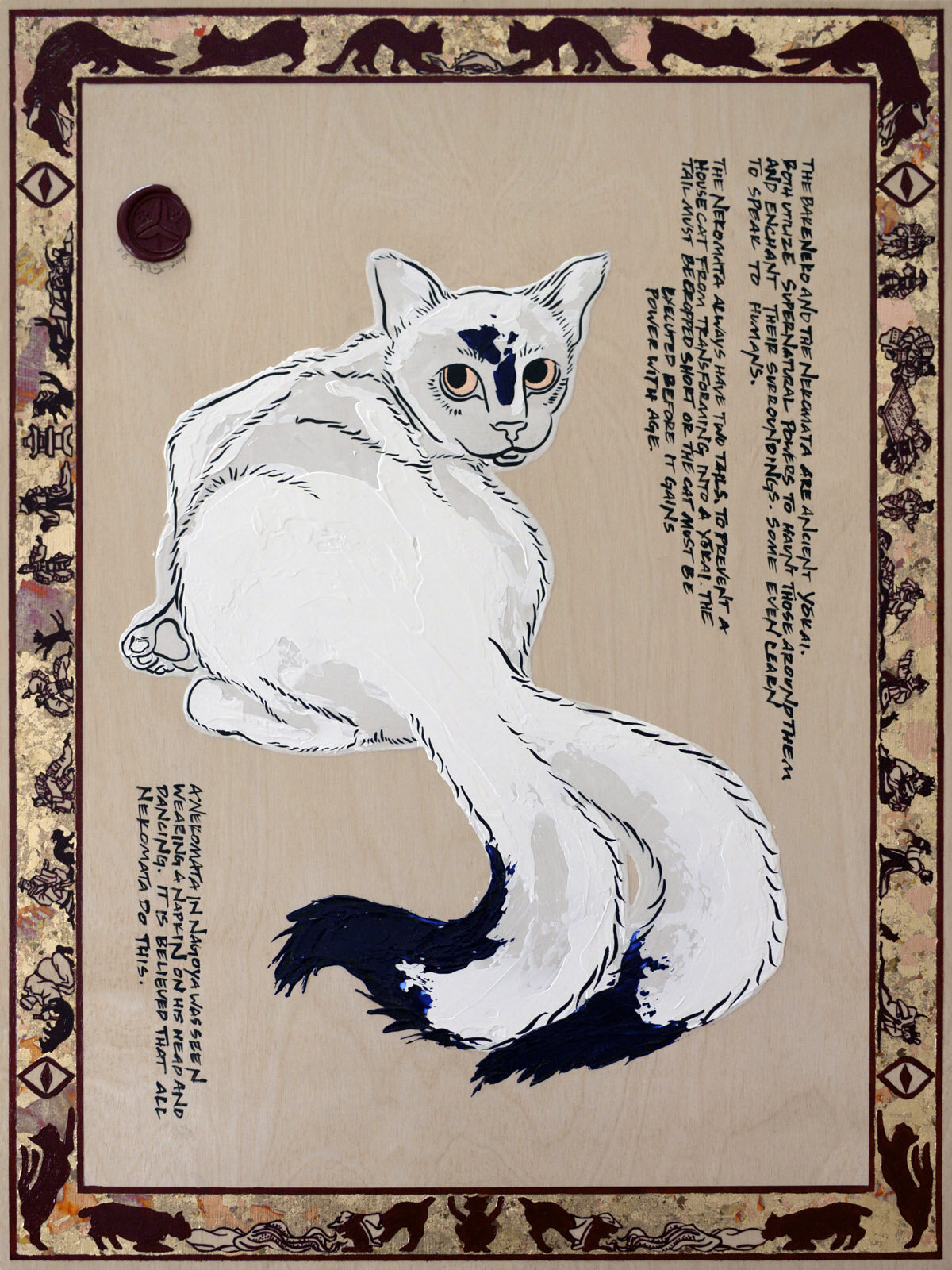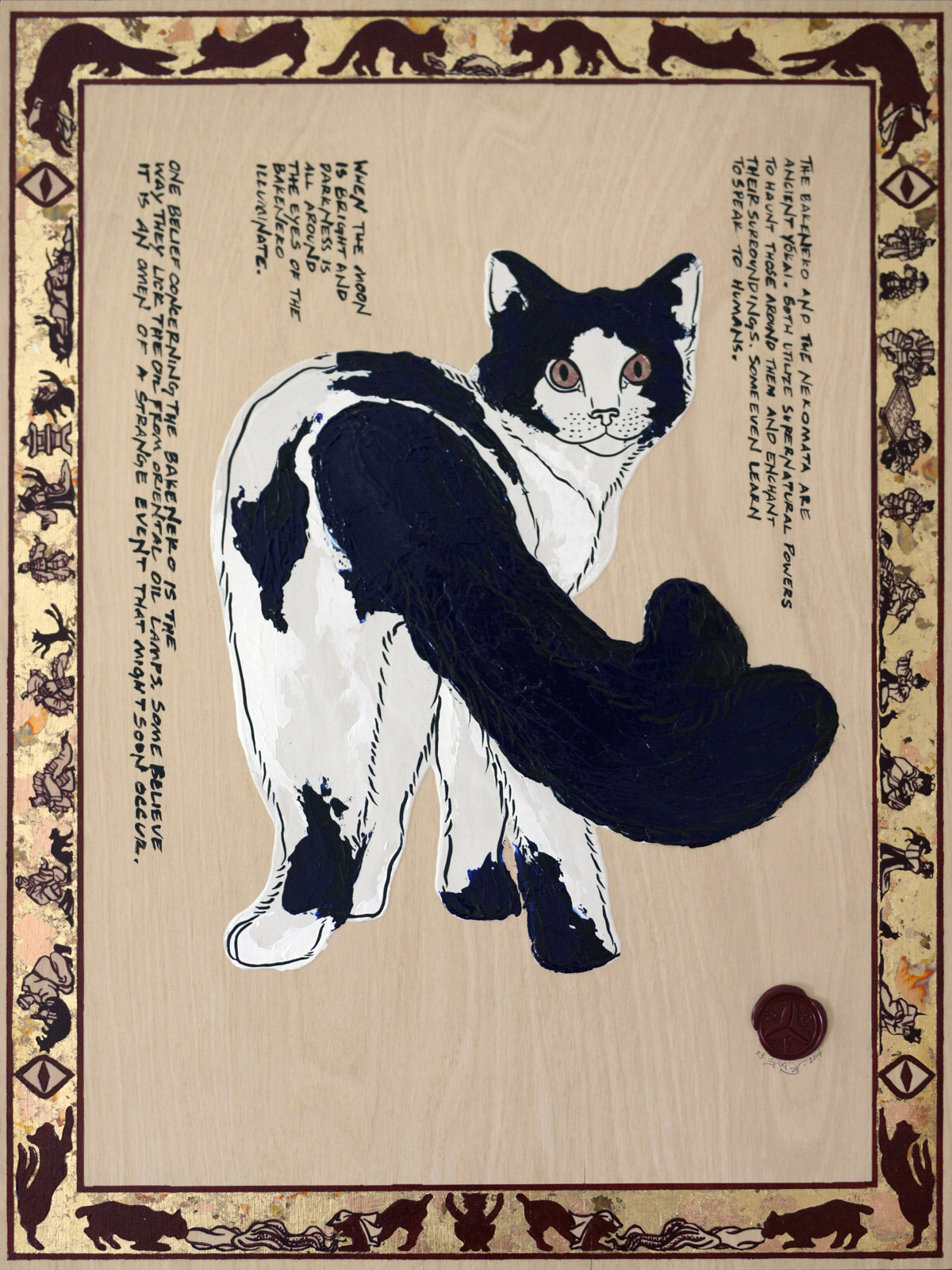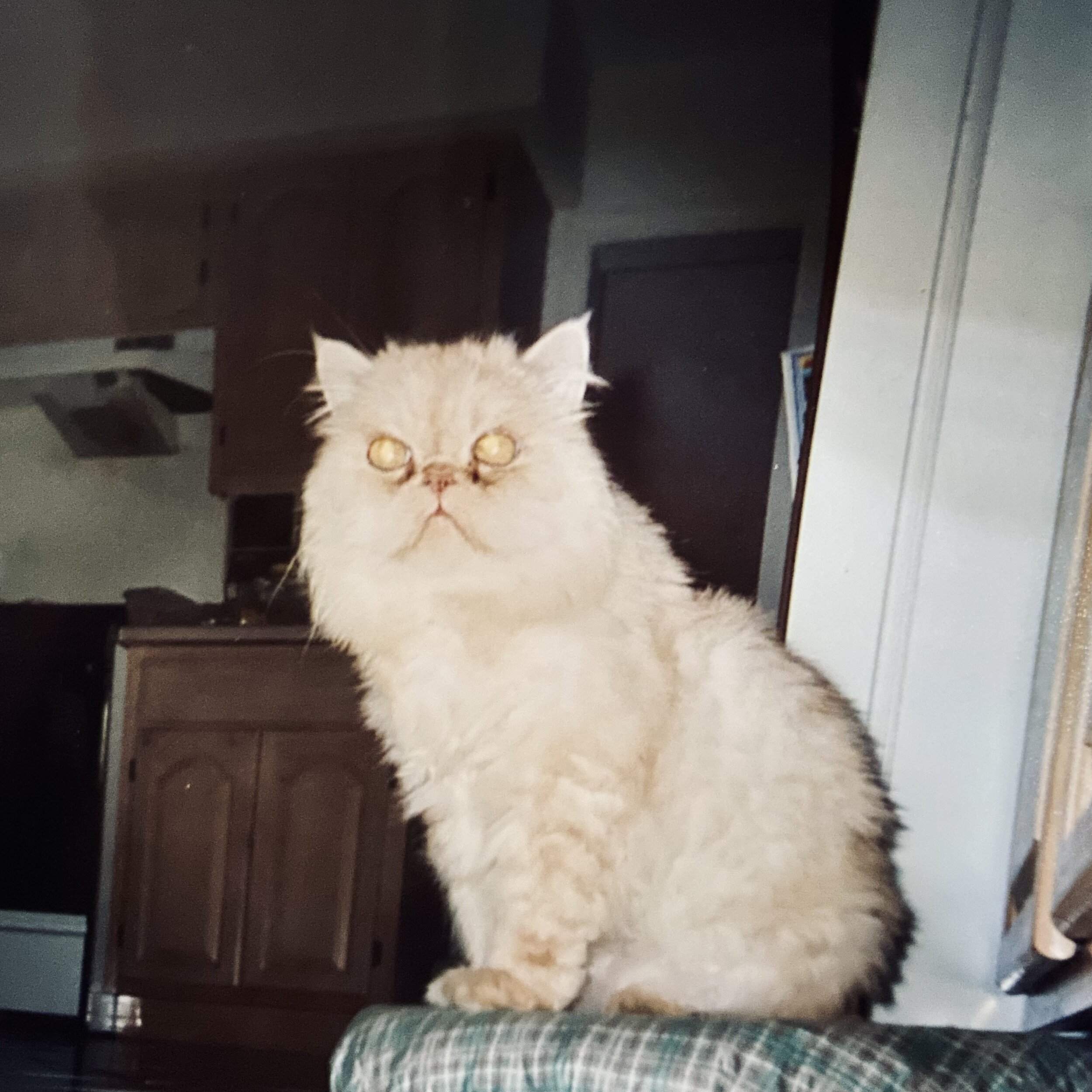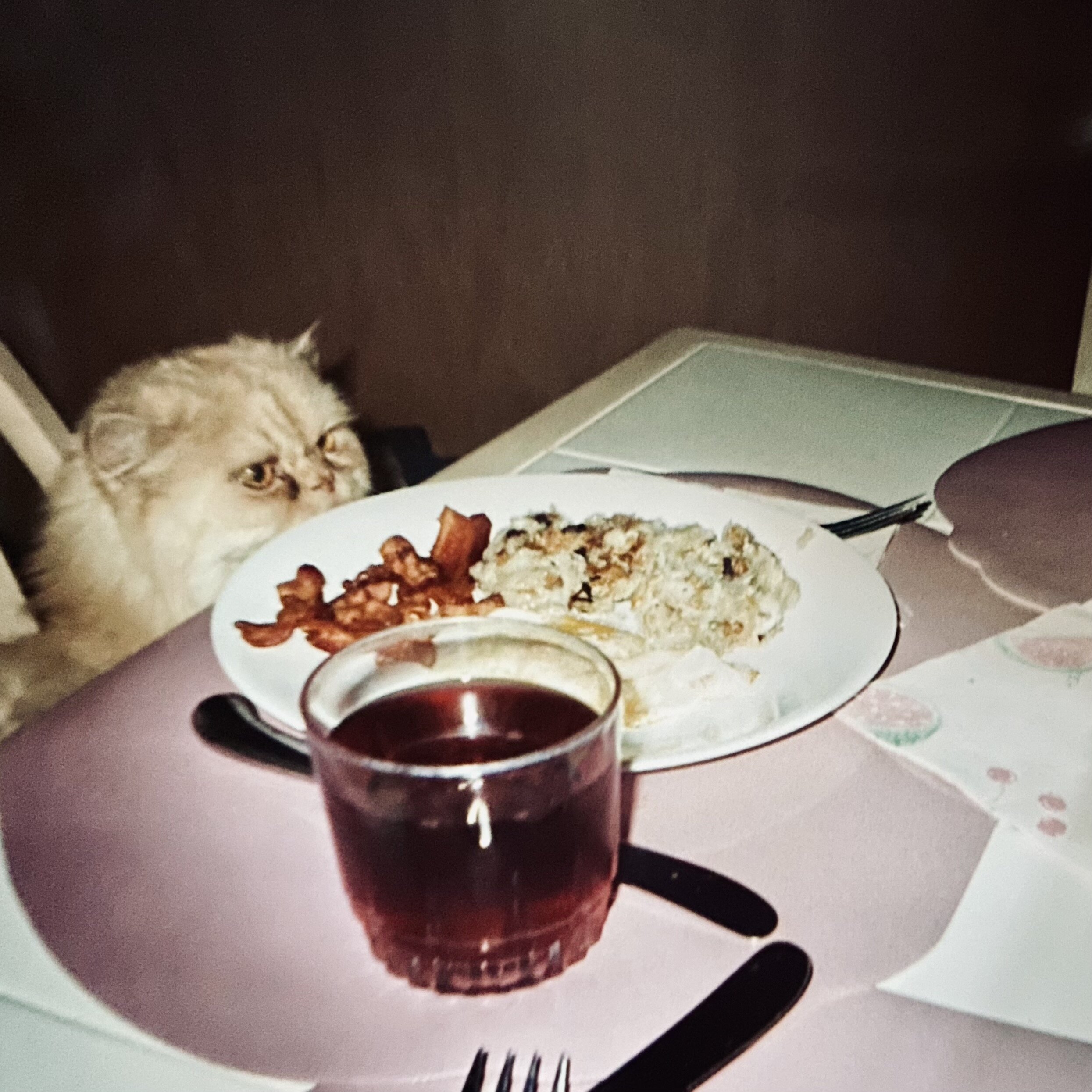Bakeneko
Meow!
In today’s modern world opinions have become increasingly polarized. Even when it comes to being on Team Cat or Team Dog. While cat lovers may see a mystical sweet creature that purrs to show its joy and affection for their human companion, others may only see the mischievous creature that unreasonably lashes out. With such differing opinions (all of which are valid) it’s no wonder why the cat is one of the most famous yōkai.
The Bakeneko is a cat Yōkai. It is supernatural, mischievous, and sneaky, but also loyal and determined. There are some theories that long ago, the Japanese assumed that cats had supernatural powers possibly due to their glowing moon-lit eyes, their child-like cries, or their strange behaviors. Nowadays, all those traits are just seen as normal “cat traits.” Legends have followed cats through Japanese history. From transforming into humans, seeking revenge on behalf of their master, to just living an extraordinarily long amount of time, these creatures are immortalized in storytelling.
My childhood cat was an overweight, bright orange, long-haired, flat-faced, yellow-eyed, purebred Persian. And his name was Wilbur.
He was such a magnificent cat. Almost royal— princely even. He knew it too. Wilbur was a distant cousin to the then National Cat Champion of the CFA in the late 1980’s. My parents told me that they purchased him at a discount because, although he was bread for show, his tail was deemed too scrawny and his feet too big.
Wilbur lived for a very long time. 21 years to be exact. During his reign, he would poop on the corner stair in vengeance because he knew it was the best spot to encouraging slipping; he would hang up our phone calls by pressing the receiver button on the land-line; he would chase frozen vegetables across the kitchen, popping them into his mouth in midair; he would sing to himself at night while watching himself in the mirror; he would escape and creep through the neighborhood; he would lick butter along the full length of the stick so we couldn’t use any of it; he once swallowed an entire spool of ribbon which my dad pulled back out of his mouth inch by inch (in hindsight they probably should have brought him to the hospital, but he was fine); he would sit atop a tufted teal cushion next to the refrigerator door; and at meals, he would impatiently wait on a chair at the table wondering why he did not get served a plate.
If Wilbur was not the real deal Bakeneko yōkai, then I don’t know what is.
—T.G.Novy
To view available work for purchase, please go to the shop.
To connect with T to commission a Bakeneko Yōkai, or a portrait of your cat as a Bakeneko, please send a note.
Bakeneko No. 1 - Sold
Bakeneko 1/3, 2014
Acrylic, gel mediums, gold leaf, cradled wood board.
18w x 24h”
Each Bakeneko No. 1-3 on wood board, showcases a textured cat with the two tails surrounded by an elaborate border that depicts one of the oldest stories of a cat being transformed into a Bakeneko. The text in the body of the work is informational and reads:
The Bakeneko and the Nekomata are ancient yōkai. Both utilize supernatural powers to haunt those around them and enchant their surroundings. Some even learn to speak to humans. The Nekomata always have two tails. To prevent a house cat from transforming into a yōkai the tail must be cropped short or the cat must be executed before it gains power with age. A Nekomata in Nagoya was seen wearing a napkin on his head and dancing. It is believed that all nekomata do this.
Bakeneko No. 2
Bakeneko 2/3, 2014
Acrylic, gel mediums, gold leaf, cradled wood board.
18w x 24h”
Each Bakeneko No. 1-3 on wood board, showcases a textured cat with the two tails surrounded by an elaborate border that depicts one of the oldest stories of a cat being transformed into a Bakeneko. The text in the body of the work is informational and reads:
The Bakeneko and the Nekomata are ancient yōkai. Both utilize supernatural powers to haunt those around them and enchant their surroundings. Some even learn to speak to humans. When the moon is bright and darkness is all around the eyes of the bakeneko illuminate. One belief surrounding the Bakeneko is the way they lick the oil from oriental oil lamps, some believe it is an omen of a strange event that might soon occur.
Bakeneko No. 3
Bakeneko 3/3, 2014
Acrylic, gel mediums, gold leaf, cradled wood board.
18w x 24h”
Each Bakeneko No. 1-3 on wood board, showcases a textured cat with the two tails surrounded by an elaborate border that depicts one of the oldest stories of a cat being transformed into a Bakeneko. The text in the body of the work is informational and reads:
The Bakeneko and the Nekomata are ancient yōkai. Both utilize supernatural powers to haunt those around them and enchant their surroundings. Some even learn to speak to humans. As the Bakeneko strut around soundlessly his fur seems to spark as if he carries a supernatural energy. Some believe the Bakeneko jump over the bodies of dead humans to transfigure into them or manipulate them. The Bakeneko can possess humans and even curse those that have harmed them.
The Plead Against the Bakeneko - Sold
The Plead Against the Bakeneko, 2014
Ink, pen, gold leaf foil, on watercolor parchment
12w” x 18h”
In this piece, a husband pleads to his wife to let him kill the house cat because he suspects it to have become a bakeneko. The text in this piece reads:
A Bakeneko is a normal cat that has transformed into a yōkai. The Bakeneko have eyes that illuminate at night and are able to contort their bodies into unlikely positions. At times they have been known to haunt the homes of former masters who have abused them or to destroy the homes and families of people who have wronged their masters. They possess similar powers to kitsune, like the ability to transform into young maidens. Bakeneko, like the Nekomata, can also transfigure into other humans by jumping over their bodies while sleeping. They are suspected to have the power to possess the bodies of the dead. On a rare occasion, they are believed to eat the bodies of the dead and to lick the blood of humans. These yōkai are frequently seen doing curious things like wearing napkins atop their heads while dancing, and licking the oil from ancient lamps. The licking of the oil from the lamps was believed to be a bad omen and sign for something soon to occur. It is believed that the only way to prevent a cat from turning into a yōkai is to cut off its tail. Once the cat is already perceived to have transformed into a bakeneko the only remedy is to kill it. It is also suggested that the longer the tail the more likely it is the cat will transform into a bakeneko. Sometimes the tail of the transforming cat will more or less split into two, or the cat will begin to grow another tail. The more years the cat lives, the more likely it can turn into a yōkai. This is why cats were often killed after living longer than ten years in ancient Japan.









